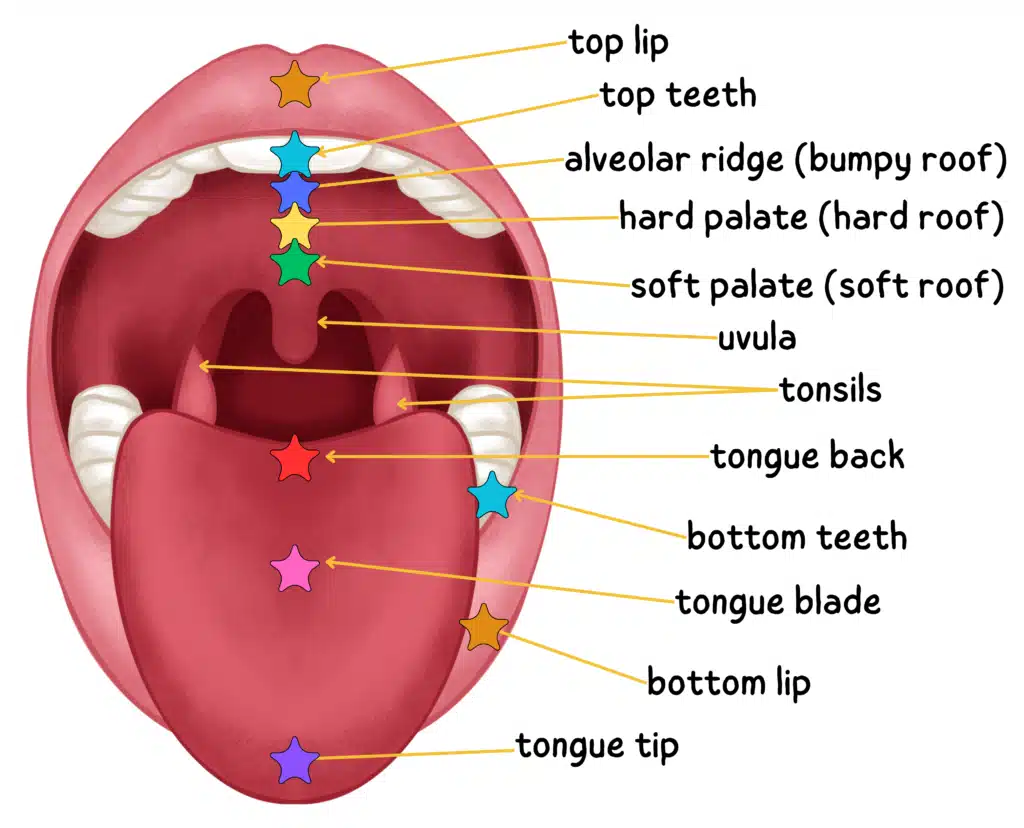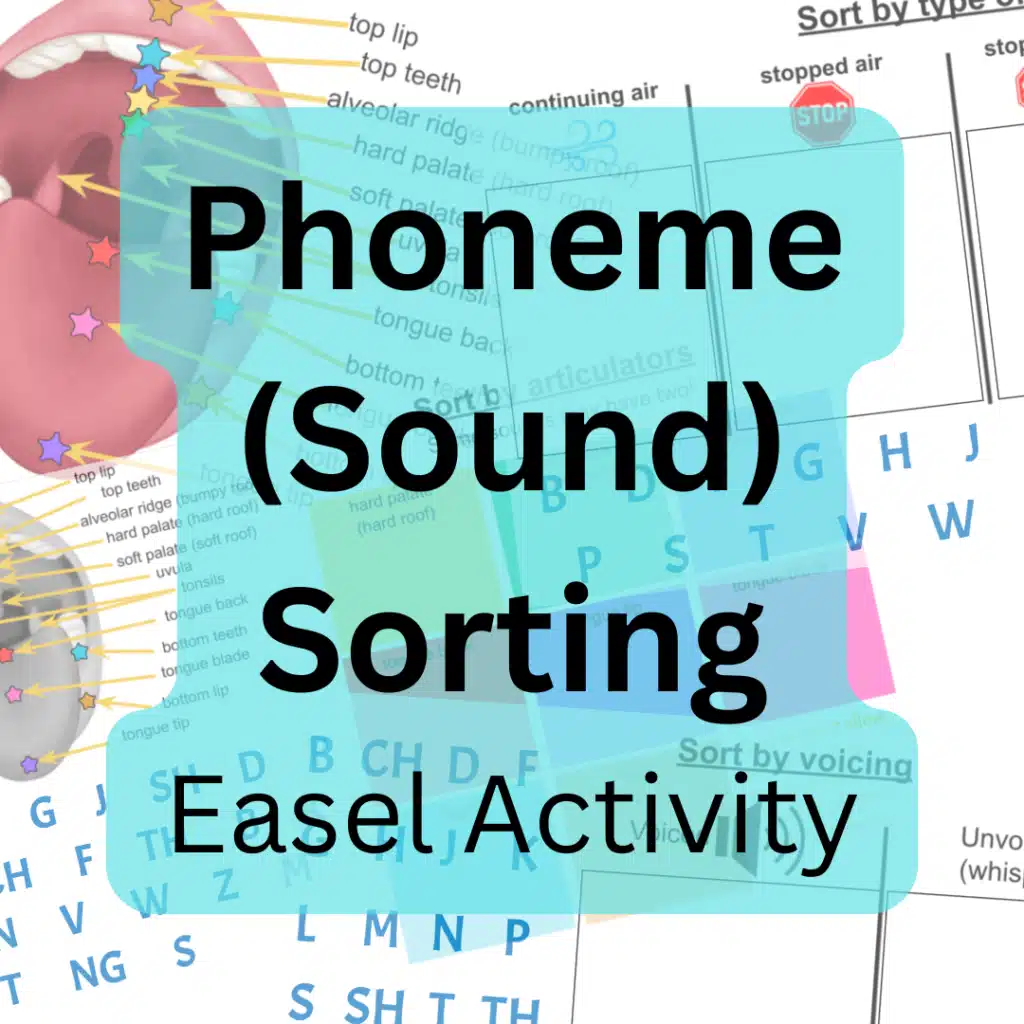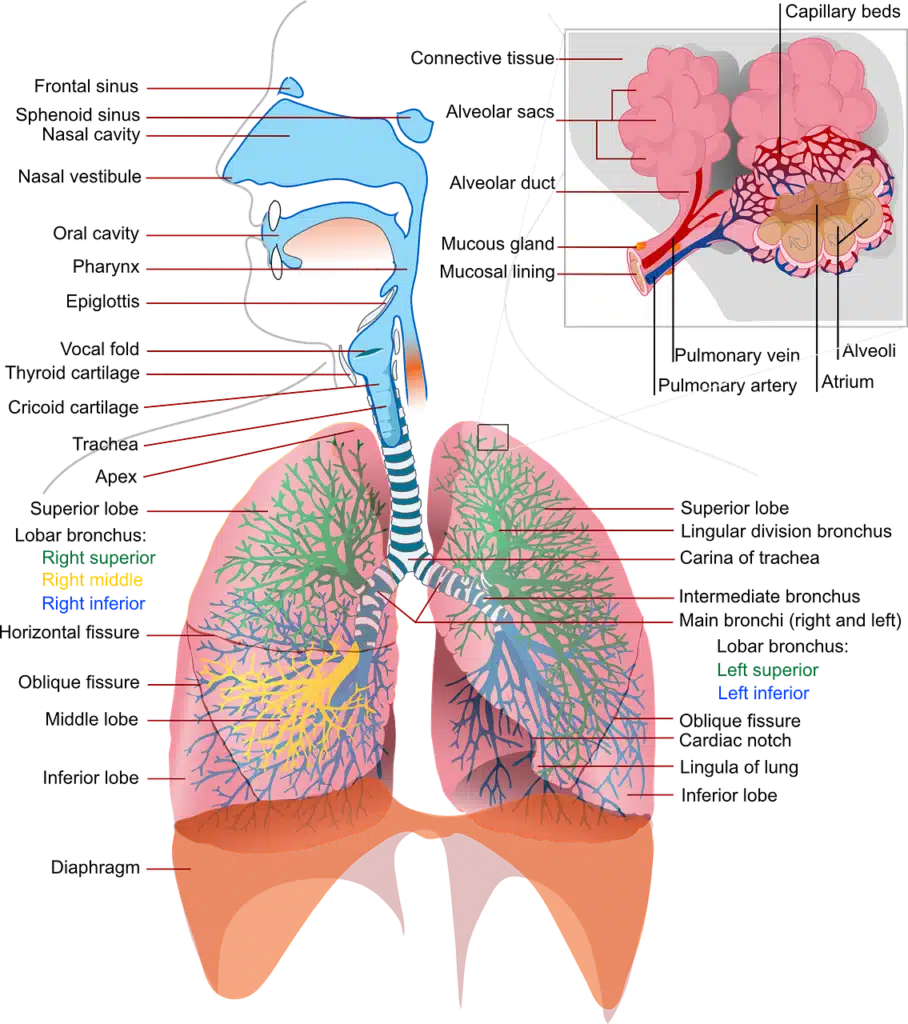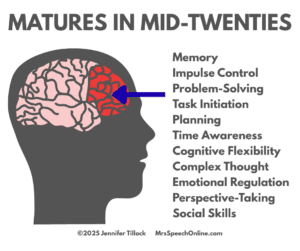
Why teach children to categorize phonemes?
Teaching children how speech sounds are made is a great instructional activity for both the therapy room and the classroom! Phoneme categorization is a highly effective activity for developing strong phonological awareness skills in young learners.

By sorting phonemes based on their place of articulation (where the sound is made), manner of articulation (how the sound is made), and voicing (whether the vocal cords vibrate), children gain a deeper understanding of how sounds are produced. This can aid early learning as it allows children to make connections and organization of the phonemes.
This knowledge is crucial!
Improved Reading and Spelling
Strong phonological awareness is a foundational skill for reading and spelling. By understanding how sounds are created and how they relate to each other, children can more easily decode words, sound out unfamiliar words, and spell accurately.
For Example:
Why do some “long u” words also have a “y” sound in front? The process of “yod-dropping”, or losing the “y” sound, in American English, generally occurs when the “ū” following an alveolar sound “t,d,n,l,s,z”. Labials or velars have retained the original “yū” pronunciation, as well as words beginning with a “ū”. There are exceptions; however, many of those can be traced back to the origin language, such as “puma”, or dialectal differences.
Enhanced Speech Clarity & Pronunciation
Sorting phonemes helps children become more aware of the subtle differences between sounds, which can improve their speech clarity and articulation.
Early Identification of Speech-Sound Disorders

The phoneme sorting activity can help teachers and SLPs identify children who may be experiencing difficulties with speech sound production.
I’ve created a new TPT Easel Activity to help you! This resource includes 3 phoneme sorting pages, and a full color oral anatomy image, with labels!
Teaching Tips for Phoneme Categorization
- Prior Knowledge: Before introducing phoneme sorting, review letters and their corresponding sounds. Emphasize saying each phoneme in isolation (e.g., /p/ for “p,” not “puh”).
- Watch videos of speech sounds, such as G – How to Make G Sound
- Multi-sensory Learning:
- Visual: Use mirrors or self-view cameras to allow children to observe their own mouth movements.
- Kinesthetic: Encourage children to touch their lips, teeth, and tongue as they learn about the different places of articulation.
- Auditory: repeat the sound multiple times.
- Tactile: Have children feel the air movement with their hands or light objects (tissues, feathers) when exploring manner of articulation (e.g., stops, fricatives).
- Modeling: Demonstrate the sorting process yourself, thinking aloud as you categorize sounds.
- Guided Practice: Go through each sort together as a class, discussing the characteristics of each phoneme.
- Differentiation: Start with a small set of sounds for younger children or those who are struggling. Gradually increase the complexity.
- Early Intervention: In early learning classrooms, integrate phoneme sorting with letter and sound instruction, emphasizing how sounds are produced.
Extension Activity Ideas:

- Watch how the mouth works in real-time while someone is speaking! It is constantly making fine-tuned movements to produce recognizable speech.
- This is a great video that shows an MRI of a person speaking and explains some of the sounds: An Introduction to the Vocal Organs – with MRI video
- Explore vowel production: Discuss the places of vowel production (front, middle, back) within the oral cavity. While these sounds involve less physical contact with the mouth, understanding their placement is crucial for comprehensive phoneme awareness.

- Anatomy of the speech system: In addition to teaching oral anatomy, teach students about the anatomy of the entire speech system, from lungs to the nose. This can be effectively integrated into a unit on the respiratory system.
- Expand Phonemic Awareness: Integrate place, manner, and voicing instruction with other essential phonemic awareness skills such as:
- Blending: Combining phonemes to form words.
- Segmenting: Breaking words down into individual phonemes.
- Rhyming: Identifying and generating rhyming words.
- Alliteration: Recognizing and producing words that begin with the same sound (not letter)
Connect Phoneme Categorization to Reading & Writing:
Analyze Pronunciation
Introduce the IPA
Introduce the International Phonetic Alphabet (IPA) or dictionary-style phonetic symbols alongside graphemes (letters) and phonemes. This helps students understand the relationship between sounds and their written representations. (The image to the right states “You wish you could read this message!”)
Talk About Production

When breaking down phonemes, discuss the oral movements involved in their production. Explore words with unexpected pronunciations, such as “truck” (often pronounced with a /chr/ sound), “Wednesday,” “library” (/laɪbɝi/), “doubt,” or “knight”.
Explain how sounds influence each other within words
For instance, in “butter,” the /t/ sound is often influenced by the surrounding vowels, resulting in a reduced pronunciation (/bʌdɚ/ or /buhder/). Discuss how the voicing of the plural “-s” changes depending on the preceding consonant.
- See my article: Everyday Phonological Processes & Their Impact in the Classroom
- 3.2: Assimilation and Dissimilation – Social Sci LibreTexts
Integrate with Other Language Concepts:
Spelling

Connect phoneme sorting to spelling instruction by exploring spelling rules, guidelines, and the impact of etymology on spelling.
Etymology
Utilize resources like Etymonline to investigate word origins and their influence on spelling.
- See my article: The Importance of Etymology in the Classroom
- Etymology
- The Impact of English Word Origins on Modern Spelling – Lucky Little Learners
- Etymonline – online etymology dictionary (shows ads)
Morphology
Explore how morphemes (meaningful units within words like affixes) affect pronunciation and spelling.
Collaboration
Teachers and SLPs can collaborate on this! Consider guest teaching or co-facilitate the activity. Both SLPs and teachers provide valuable insights into student needs and offer specific strategies for addressing individual challenges.
Other resources on Phoneme Categorization:
- Place Manner Voice Chart | The Speech Guide
- Understanding Consonant and Vowel Phonemes in English
- Rethinking Spelling Instruction — Reading Rev
- Word Mapper – Phonics & Stuff – phoneme to grapheme tool
- Teaching Tools – Phonics & Stuff – includes word chain builders, phonemic manipulation tool, and sentence generator. There are games and a worksheet creator on other tabs. Some features require a free account, and others require a subscription.
Social Media Icons: designed by rawpixel.com – Freepik.com













